The queuing experience at many of our favourite visitor attractions and museums is often viewed as a separate and unavoidable component of the main event. Much like the experience at airport security, the queue is the part of the holiday which is to be endured rather than enjoyed.

Attractions are becoming increasingly complex and varied, competition is high, and many of our clients are under pressure to draw a wider demographic. To add value to their offerings, they will need to focus on a much-overlooked opportunity: the queue.
However, digital media alone isn’t the answer to queue problems. The solution lies in how we deliver that media through a dynamic approach.
Squint/Opera’s approach is to create a true ‘shoulder experience,’ a prelude to the main event, which augments the offer by incorporating the queue into the overall experience. The size and scope of the ‘shoulder’ are unique to each project and are dependent on a variety of factors, and our experience design must adapt to suit each case.
We’ve outlined a variety of key examples of these experiences and how they’ve made all the difference to their respective visitor attraction.
Empire state of mind
Squint’s job is not about the view from the top. It’s about everything else around it. We’re here to give that view context, make it understandable, educate and entertain.
The Empire State Building Observatory is an iconic space and offers a panoramic view of New York City. This landmark sees visitor numbers in excess of 4 million annually, and naturally, there are extensive queues for the observation deck.
Squint/Opera, in collaboration with Thinc Design as the lead exhibition designers, was commissioned to create a series of interactive and media experiences as a part of the observatory redesign, from the welcome lobby to the 102nd-floor observation deck. As the world’s most photographed building, there was an enormous historical source from which to draw inspiration.
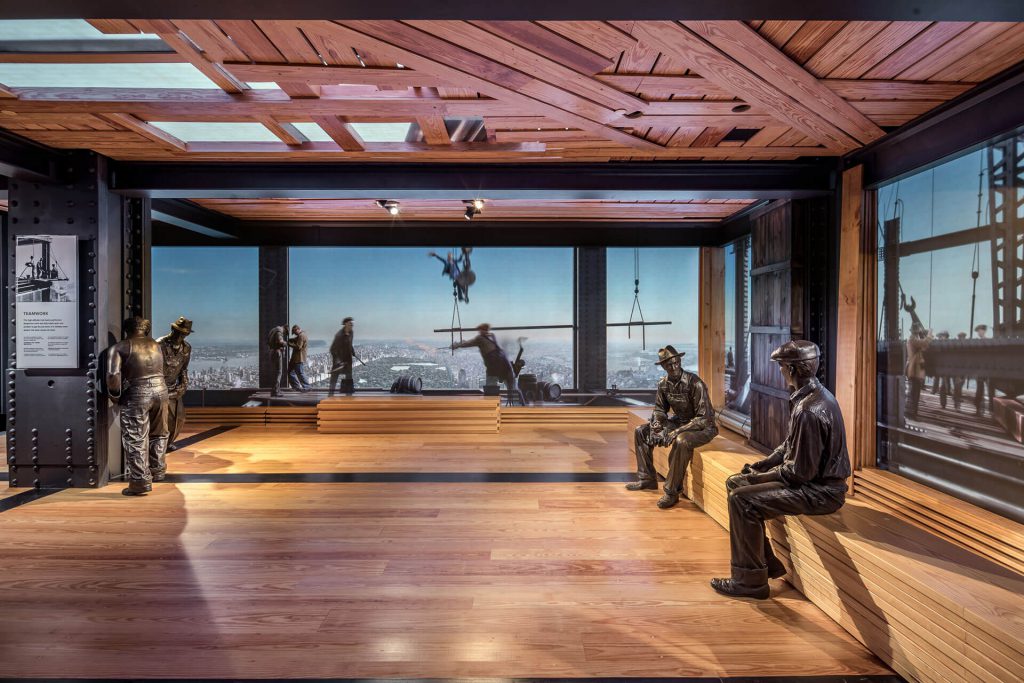
We transport visitors to the building under construction during the 1930s. Hot rivets fly, and workers stomp around the immersive digital media covering the walls. King Kong’s roar is felt as he swats away pesky biplanes on dynamic, digital “windows.” This is accompanied by a soundtrack featuring a specially-commissioned 50-piece orchestra.
This experience takes place across a queue journey which engages visitors from start to finish. The lengthy wait never feels like a chore, and the visitors don’t feel short-changed. We haven’t supplanted the view. We’ve framed what you can see by implanting a genuine understanding of it.
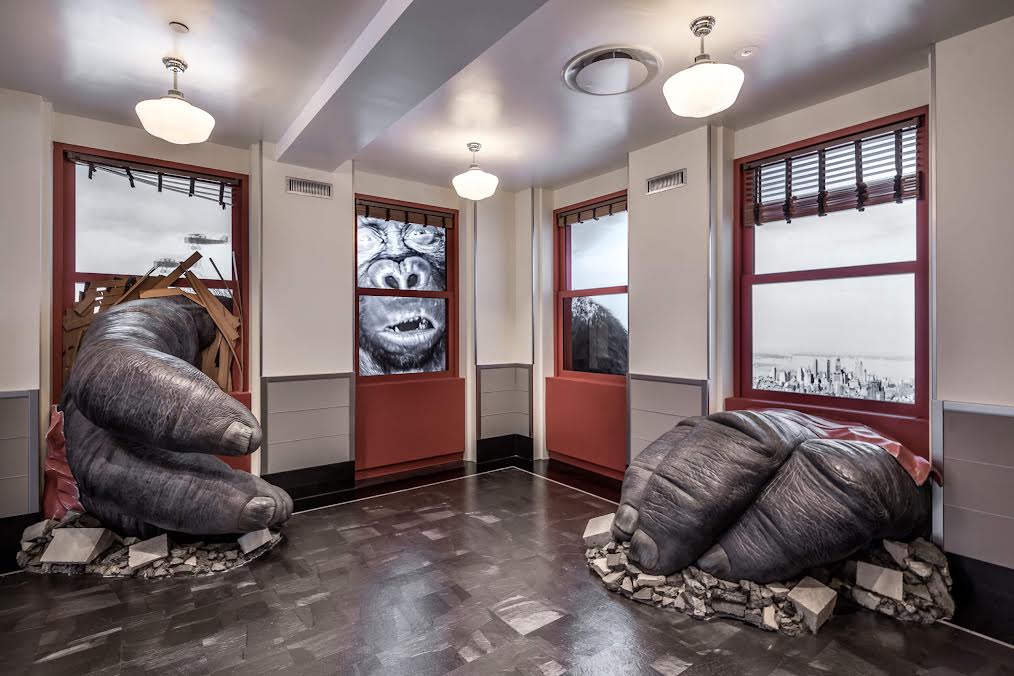
Train reaction
The Peak Tram is one of Hong Kong’s most recognisable tourist attractions and the oldest mountainside railway in Asia. The sixth-generation trams are a beautiful piece of Swiss engineering, but they’re also a working asset — locals and commuters ride them daily.
Squint was commissioned to create immersive digital media for the extensive redevelopment of the tramway. Our challenge was to create a shoulder experience which would provide informative entertainment for waiting passengers — as queuing times regularly exceed two hours — all whilst respecting the tramway as a functional mode of public transport.
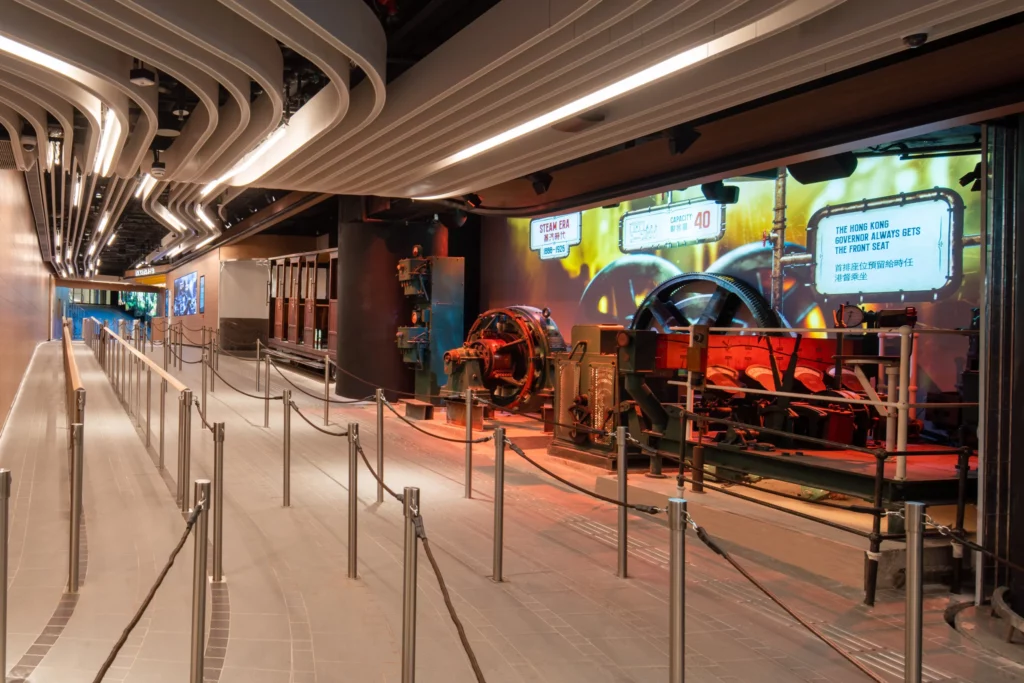
Three media installations stretch across the queuing area and employ mixed media animation, archive footage and film to chart the history and culture of the Tramway.
‘The Beating Heart’ is a dynamic film which explores the four technological advances the tramway has seen. The film is projection-mapped over the historic haulage room equipment that made all those journeys to the peak possible, giving the illusion that they are in motion once again.
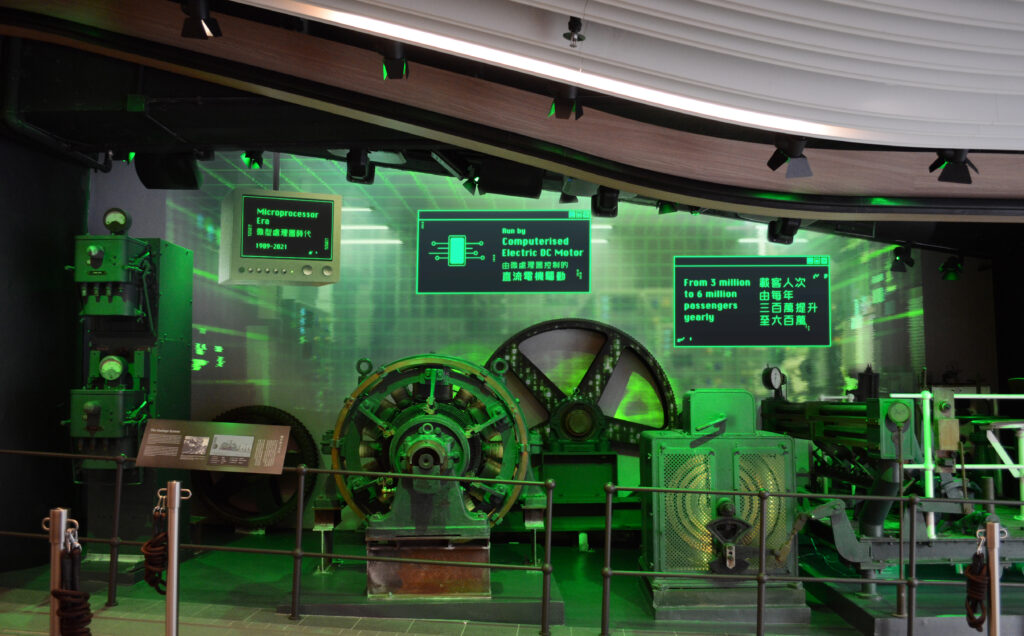
“Once Upon a Tram” is an AV installation situated in the waiting area between the main entrance and the ticketing counters. The installation displays Squint’s film, which draws from the Peak Tramway archive, incorporating historical footage, photography, and text into dynamic animations that allow visitors to relive key moments in the tram’s storied past.
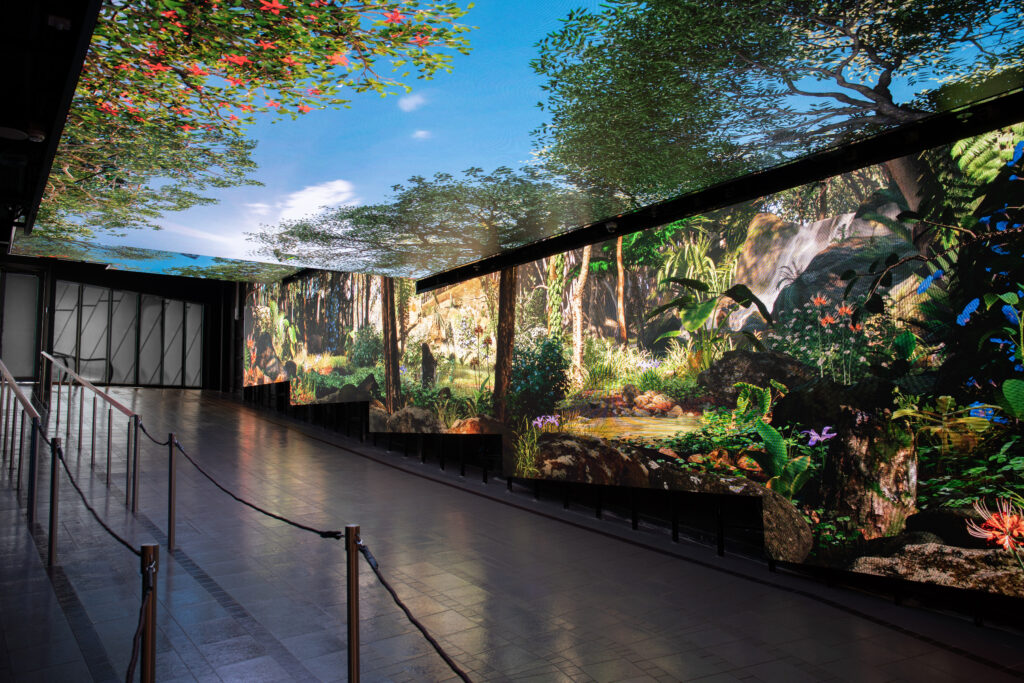
‘Go Wild’ is the last installation visitors pass before catching the tram. This installation consists of wall and ceiling-length immersive LED screens which depict the natural environment of Victoria Peak. We mirrored this natural beauty with a hyper-real rendering of woodlands, flora and fauna. Squint employed the Unreal game engine to create and develop this digital Hyper-real world in real time.
These zones form a shoulder experience which engages visitors in the history and engineering of the Peak Tramway without detracting from the key experience of the trams themselves (and the panorama at the peak,). The installations break up the queuing space and contextualise the view for visitors during their wait.
Elevator music
Battersea Power Station is an iconic piece of British history with its own story to tell. The station powered a fifth of London before shutting down in 1983. Battersea then became iconic in pop culture and a visual mainstay on the bank of the River Thames.
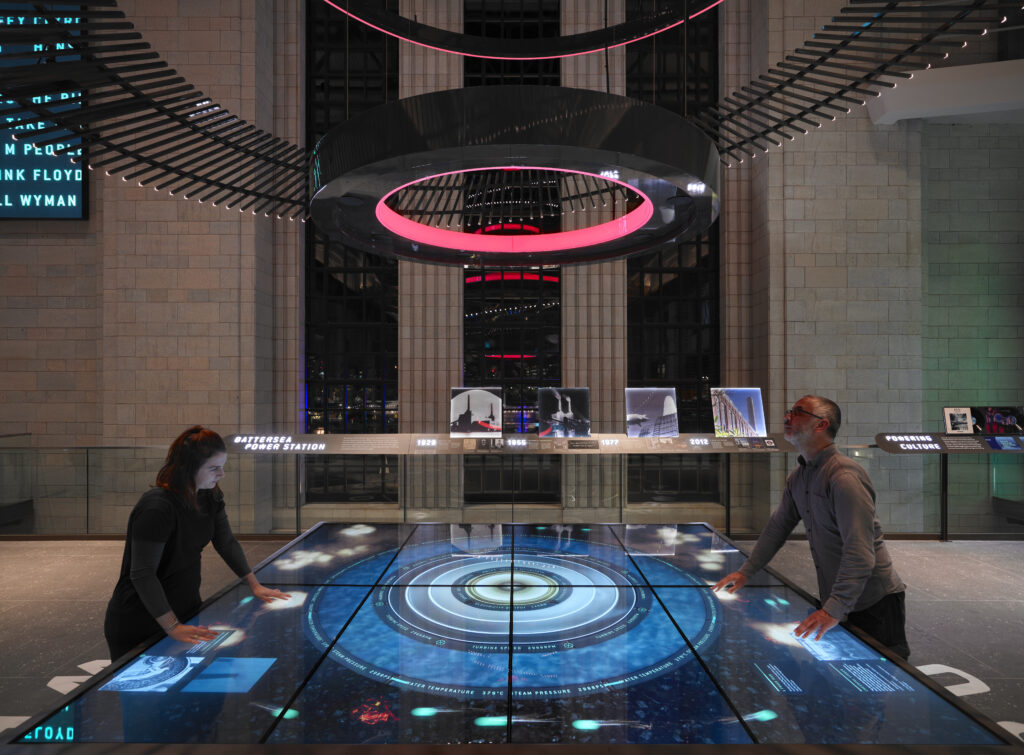
The power station has since undergone a £1.15bn renovation, in collaboration with RAA, Squint/Opera developed an interactive shoulder experience in its beautiful, art deco Turbine Hall A. Our design serves as a prelude to Lift 109, which rises through and out the top of the station’s northwest chimney to offer 360-degree views over London.
Anyone working in observatory experiences knows that the seamless choreography of visitors’ movements through, up and down the building is the big challenge. The visitor must never feel like they are queuing. To achieve this, Squint’s team had to understand the physical constraints of Battersea’s architecture.
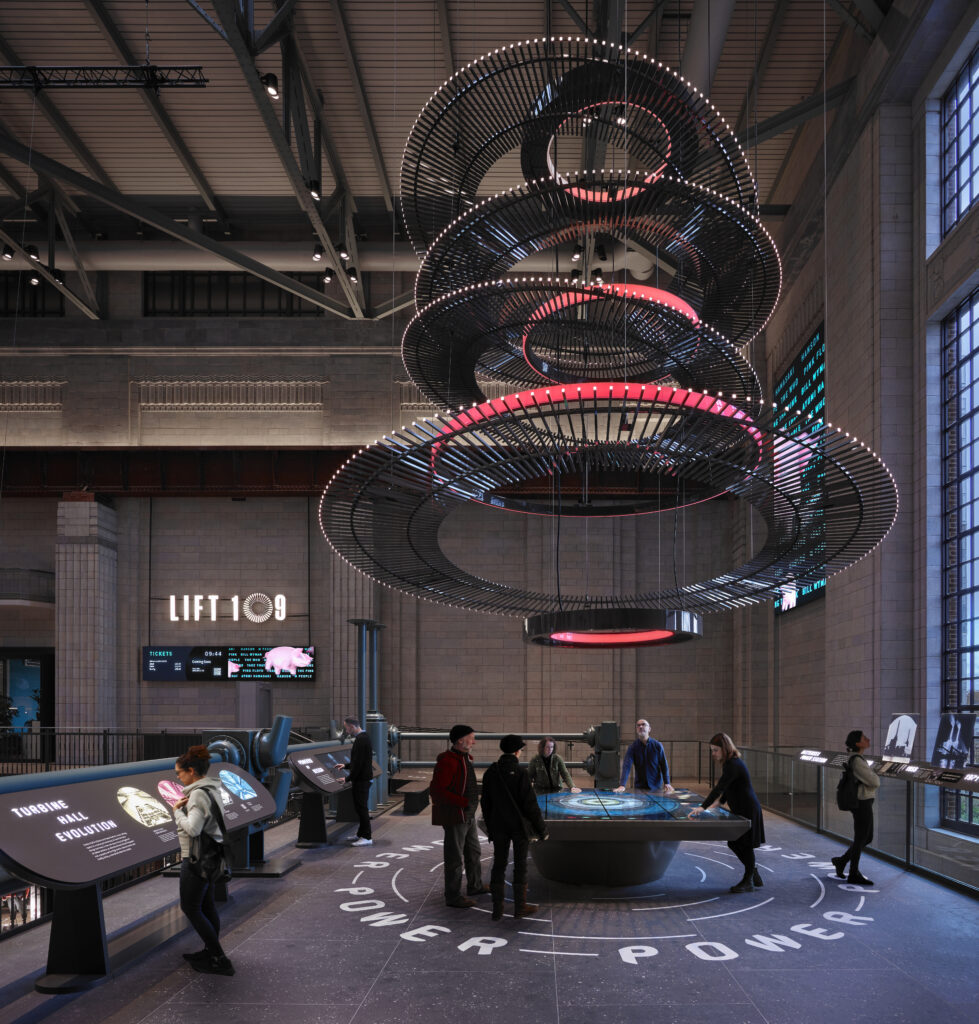
Like the observation decks of the Empire State Building, Lift 109 is small, holding just 30 people. To maximise the efficiency of the elevator space, we created a time-sensitive offer, with doors opening and closing like valves and lifts going up and down like pistons.
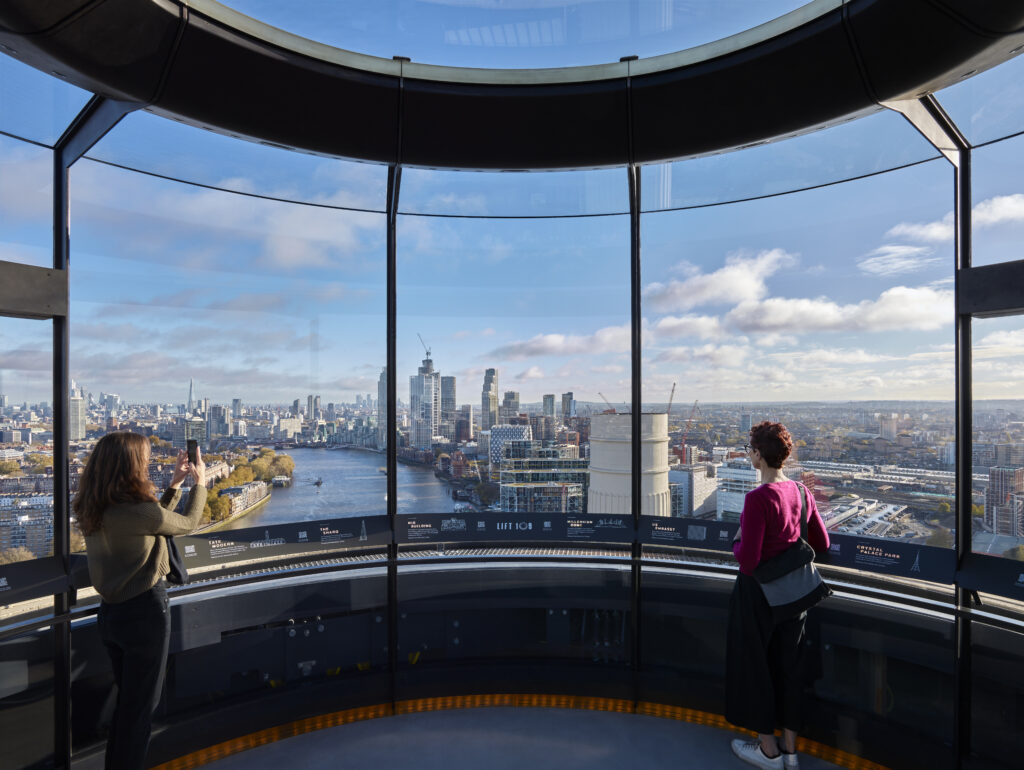
We carefully incorporated archive footage, worker testimony, and the station’s various cameos in popular culture into dynamic animations, interactive tables, immersive media and soundscapes. Film, images, particles and colours animate across immersive digital screens. In the last waiting area, our film shows the building’s transformation throughout its history, ending just as the lift door opens.
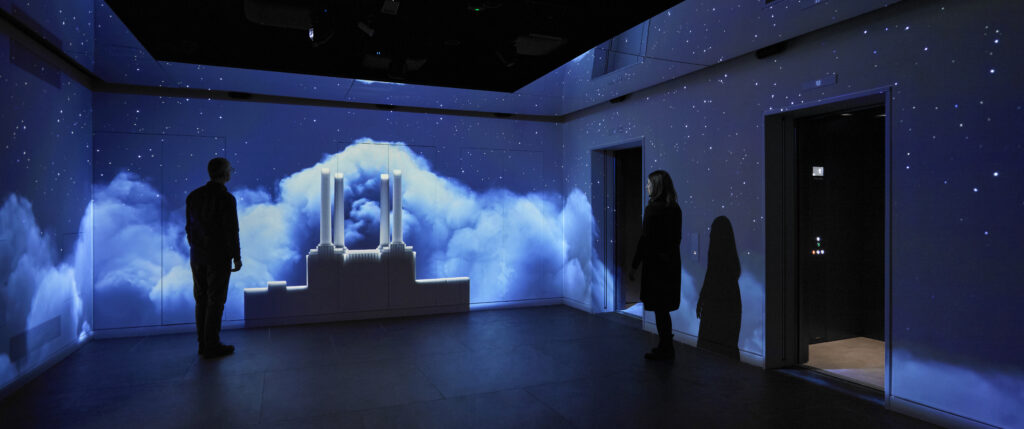
These elements are all time-critical. The media installations act to stagger visitors as they pass through the exhibition space, and subsequently, the visitor’s perception that they are queuing is dissolved.
Also, by creating an observatory experience which is not solely reliant on weather factors, a strong shoulder experience will make it less reliant on visibility (something especially important in rainy London).
Our Philosophy: What Queue?
It’s not enough to simply make the queuing space a distraction. That would be superficial and would short-change visitors.
We designed our installations for a rainy day. In doing so, we show visitors what the panorama can’t — the history, culture and engineering surrounding the main event.
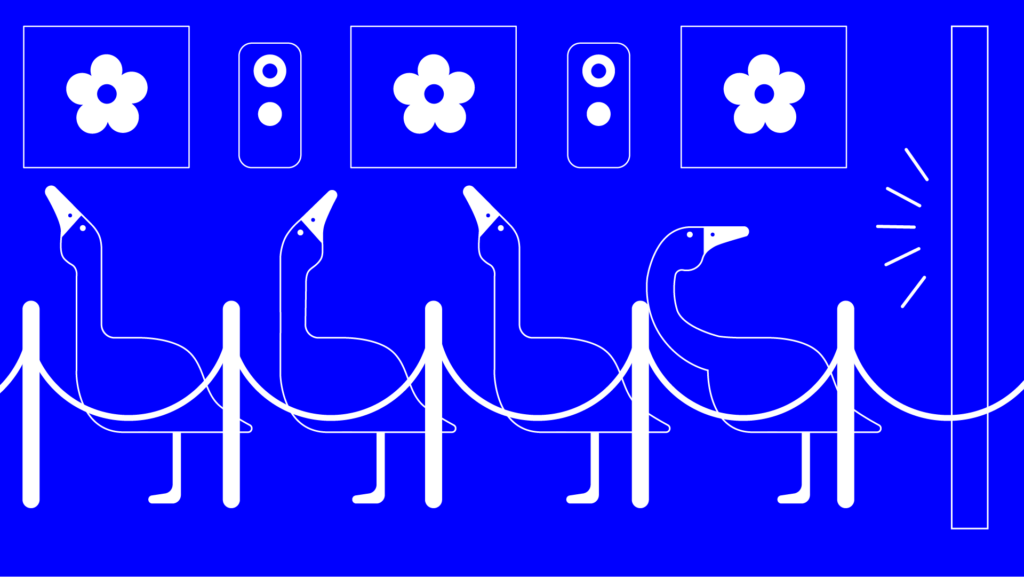
The three examples we’ve highlighted have history in spades, and our work leveraged this heritage to create seamless entertainment. Squint was committed to extensive research on each project. Clients provided archive assets, and we prioritised historical accuracy as we translated this enormous volume of material into easily-digestible and engaging content for our media displays.
The mix of people in any queue is unpredictable, but what they have in common is a desire to know more about where they are and what they’re going to see. The goal was to present that knowledge in exciting ways while visitors made their way through the least of exciting spaces — the queue. This, coupled with our ethos on the shoulder experience and our groundbreaking Virtual Twin pre-production technique, all contribute towards Squint/Opera’s radical reimagining of the customer experience.
